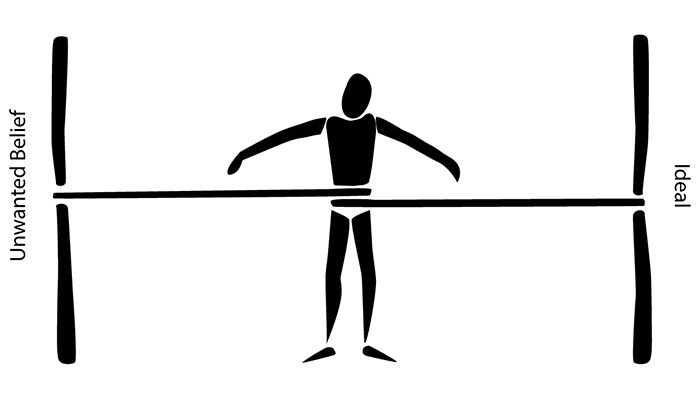My recent articles have been centered on the recent release of our new book, Identity that Robert Fritz and I collaborated, which addresses many of the key misconceptions of the self-help movement. The topic of self-esteem-based self-help movement has been at the top of the list as an incorrect theory.
At the end of the day, what you think about yourself is not what leads you to achieving your goals.
The notion being fed to the world is that the key to success is an enormous amount of positive self-belief. In practicality, however, this is not true. At the end of the day, what you think about yourself is not what leads you to achieving your goals.
Unfortunately, this idea that our own identity is absolutely critical to our success has become so ingrained in our culture that it’s not easy to let go. So we’ve talked about how setting impossibly romanticized ideals sabotages your goals and how an emphasis on positive belief can disconnect us from our true capability.

To recap
An ideal is what we picture as the ultimate expression of who we want to be. We might want to be like a famous athlete or musician in terms of ability or looks or some other mix of traits we desire in our own lives—regardless of how unrealistic or over-hyped the reality behind that ideal might be. Then, we might turn to positive belief to help us fill the gap between who we are and who want to be. If we just believe in ourselves, we think, we can tap into some hidden reserve of Spartan discipline and creative inspiration to transform our lives.
In reality, we should take stock of what is important and where we are in our lives, and we should make a more grounded assessment of our ideals and why we hold them. In my previous post on ideals, we talked about how we might come to see a mentor or celebrity as an ideal without realizing how we only saw the highlight reel moment’s of our hero’s life rather than a complete list of their strengths and their weaknesses or how we only saw photoshopped pictures of that model we wished we looked like.
These are very external influences, and they only tell part of the story.
Hidden unwanted beliefs
Your ideals and what you think you should be are often driven by an unwanted—but hidden—belief that you hold about yourself but would not like to know. In fact, you might not even realize that you hold this belief because you think there is something so terrible, so devastatingly bad, that you can’t look at it, so you turn your attention away from yourself and to your ideal.
If you can identify your ideal, you can pretty easily locate your unwanted belief. Just look for the opposite. If you thought you were a coward, your ideal would be bravery. If you thought you were stupid, your ideal is to be smart. And so on.
In our era of compulsory high self-esteem, it may be hard for you to entertain the idea that you perhaps hold this unwanted belief, but it’s there, and it’s probably holding you back from achieving your goals. The problem with unwanted beliefs is that they are typically not accurate and harmful in that we set these completely unobtainable standards for our life. If we hold as an example, the unwanted belief that we are stupid, we often think that we are much less intelligent than we really are.
And that’s the challenge. Unwanted beliefs are not fact-based. Your self-opinion functions independently from reality, which can make it impossible to change.
So what can we do?
Recognizing your unwanted beliefs helps you to regain control of the choices you make. You might not be able to fix the pothole in the street, but once you know it’s there, you can make the necessary adjustments and focus on safely reaching your destination.
With that control, you can shift your focus from chasing abstract ideals to focusing on actual outcomes. Instead of wishing that you could play guitar like Jimi Hendrix because he is your ideal and your fear is that you have no talent, you can make measurable progress by going to your guitar lesson once a week and taking 10 minutes a day to practice your chords.
When you understand why you think and the act the way you do, you position yourself to take control of your choices so that you can build a better life, one decision at a time.